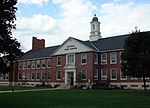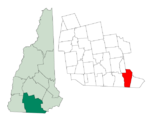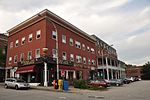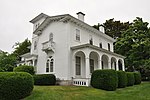Hills House (Hudson, New Hampshire)
Houses completed in 1890Houses in Hillsborough County, New HampshireHouses on the National Register of Historic Places in New HampshireHudson, New HampshireMuseums in Hillsborough County, New Hampshire ... and 2 more
National Register of Historic Places in Hillsborough County, New HampshireShingle Style architecture in New Hampshire
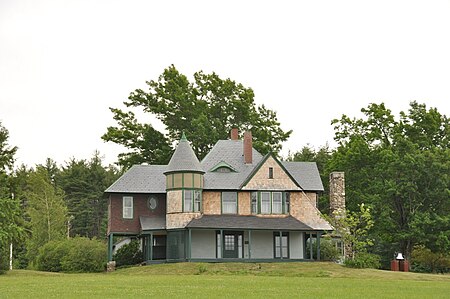
The Hills House is a historic house museum at 211 Derry Road (New Hampshire Route 102) in Hudson, New Hampshire. Built in 1890 as a summer country house by a local philanthropist, it is an excellent local example of Shingle style architecture. The house is now used by the local historical society as a museum and meeting space. It was listed on the National Register of Historic Places in 1983.
Excerpt from the Wikipedia article Hills House (Hudson, New Hampshire) (License: CC BY-SA 3.0, Authors, Images).Hills House (Hudson, New Hampshire)
Derry Road,
Geographical coordinates (GPS) Address Nearby Places Show on map
Geographical coordinates (GPS)
| Latitude | Longitude |
|---|---|
| N 42.796111111111 ° | E -71.434722222222 ° |
Address
Hill's House
Derry Road
03051
New Hampshire, United States
Open on Google Maps
